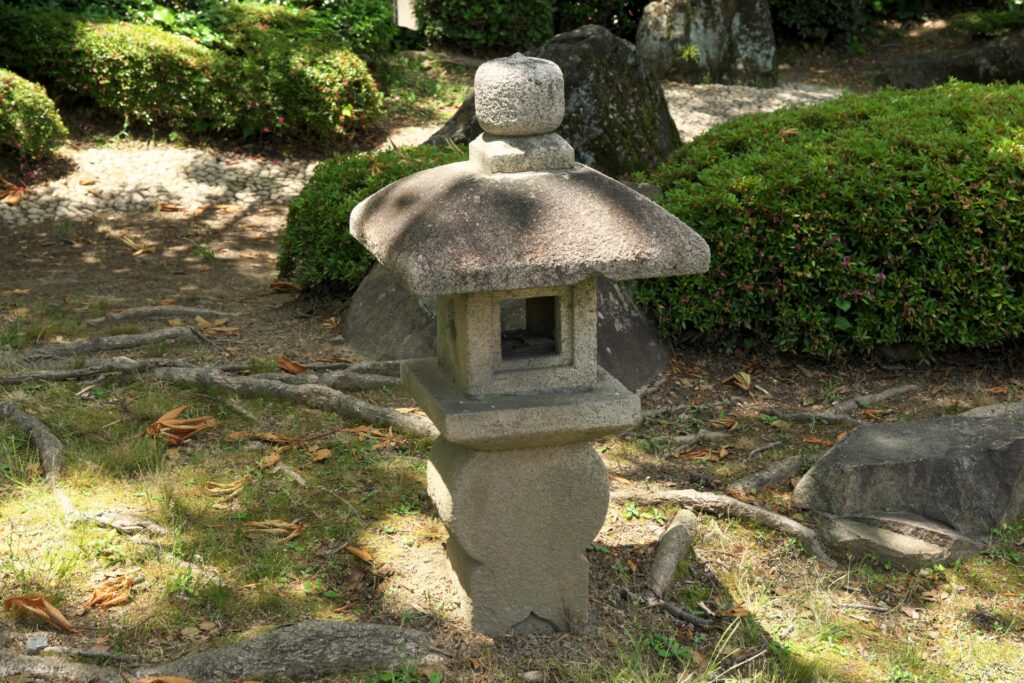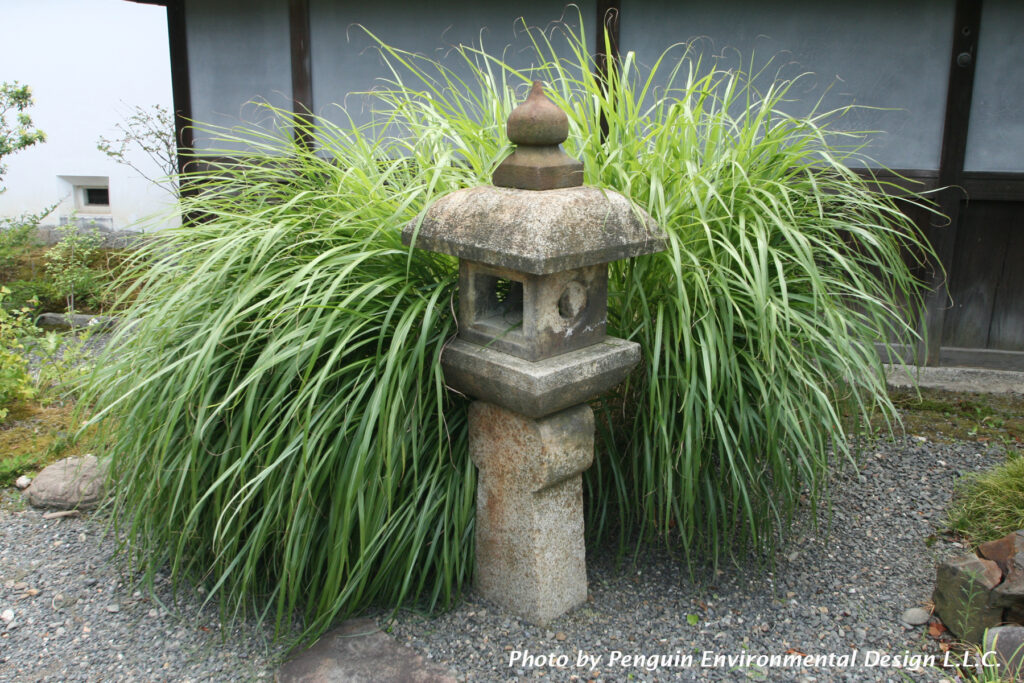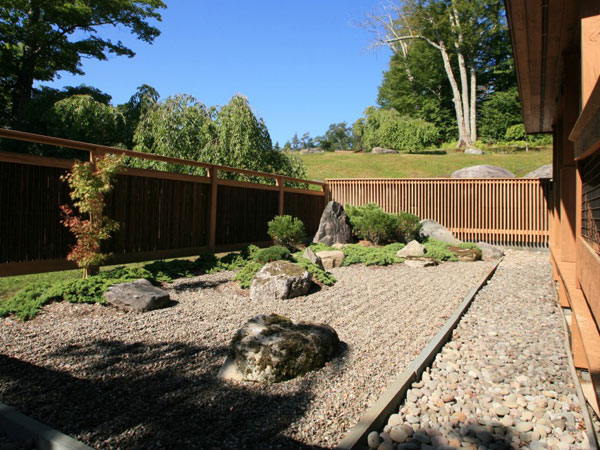Although Japanese gardens were influenced by Buddhism significantly, there is some controversy that Christianity also influenced Japanese gardens to some extent. I am interested in this topic because Japanese people have been open to adapting to something new.
The first encounter of Christianity for Japanese people was with the Portuguese Catholic in 1549. It was the first encounter of European culture in a sense. Since then, many people including some samurai lords or Daimyo (大名) have been converted to Catholicism. Catholicism had prevailed under the protection of Oda Nobunaga. But several years later, Toyotomi Hideyoshi prohibited it.
I do not find any clear sign of Christianity in the historical Japanese gardens. Yet, I want to introduce Oribe Toro lanterns. Furuta Oribe, the Daimyo who was a celebrated tea master, liked that Toro. He was not Christian. Yet, he had many chances to learn Christianity and European culture because his sister and some of his friends were Christian.

Oribe Toro Lantern
The human craving is on the bottom part of this lantern.
Oribe Toro lantern is called the Kirisitan (Christian) Toro lantern. This type of lantern has a figure craving. Christians took this figure with Jesus or a priest. Some researchers believe that Furuta also had the same idea. I am not sure what is true or not. Honestly, the figure looks like a Buddhist monk to me.
Christianity and Buddhism
I am not surprised that different religions are mixed into the same object including architecture like the Hagia Sophia. Speaking of the gardens, many Japanese gardens represent Buddhist cosmology due to people’s desire for salvation. Christianity also has a similar “destination”. Since Christians in Japan were persecuted for a long time, I can imagine that they prayed in front of the Toro lantern secretly. So, there is no problem that the figure of a Buddhist monk for me was Jesus for them.

This Orube Toro does not have a human craving.


